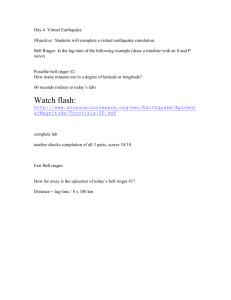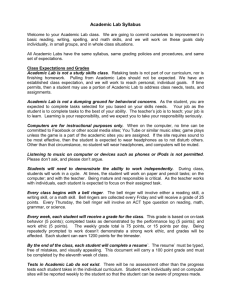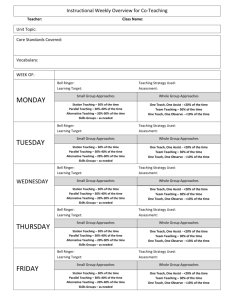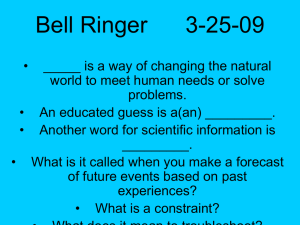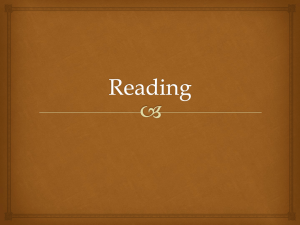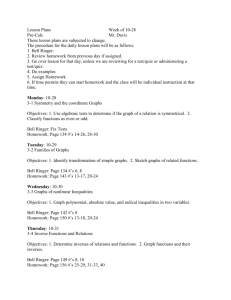Standard for the week. RL.11-12.5 Analyze how an author's choices
advertisement
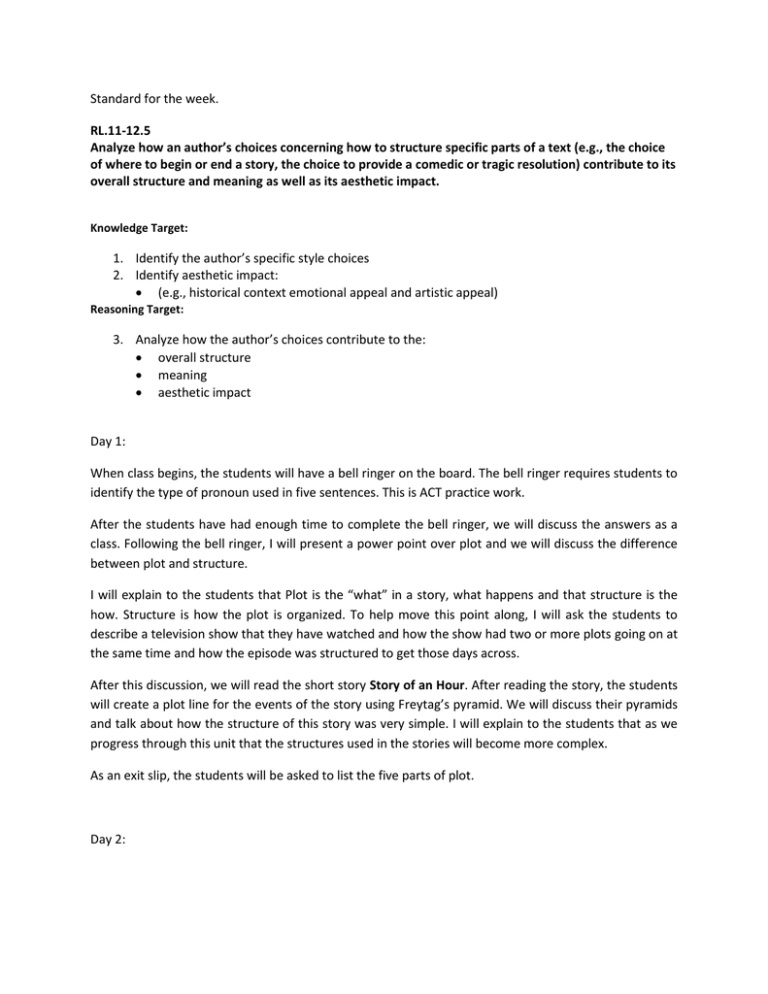
Standard for the week. RL.11-12.5 Analyze how an author’s choices concerning how to structure specific parts of a text (e.g., the choice of where to begin or end a story, the choice to provide a comedic or tragic resolution) contribute to its overall structure and meaning as well as its aesthetic impact. Knowledge Target: 1. Identify the author’s specific style choices 2. Identify aesthetic impact: (e.g., historical context emotional appeal and artistic appeal) Reasoning Target: 3. Analyze how the author’s choices contribute to the: overall structure meaning aesthetic impact Day 1: When class begins, the students will have a bell ringer on the board. The bell ringer requires students to identify the type of pronoun used in five sentences. This is ACT practice work. After the students have had enough time to complete the bell ringer, we will discuss the answers as a class. Following the bell ringer, I will present a power point over plot and we will discuss the difference between plot and structure. I will explain to the students that Plot is the “what” in a story, what happens and that structure is the how. Structure is how the plot is organized. To help move this point along, I will ask the students to describe a television show that they have watched and how the show had two or more plots going on at the same time and how the episode was structured to get those days across. After this discussion, we will read the short story Story of an Hour. After reading the story, the students will create a plot line for the events of the story using Freytag’s pyramid. We will discuss their pyramids and talk about how the structure of this story was very simple. I will explain to the students that as we progress through this unit that the structures used in the stories will become more complex. As an exit slip, the students will be asked to list the five parts of plot. Day 2: When class begins, the students will complete the bell ringer on the board. The bell ringer lists the different types of nouns and the students will be asked to come up with 3 of each of the different types of nouns. After the students have had time to complete the bell ringer, we will discuss their answers and talk about their choices. To continue working on structure, we will read the short story The Life You Save May Be Your Own. This story also has a very simple structure, but it is not as simple as the story from yesterday. As we read the story, we will stop to discuss what happens in each section. When we are finished reading the short story, the students will use Freytag’s pyramid to analyze the structure of the story. Exit Slip: The students will have to hand in their pyramids as an exit slip Day 3: The students will have five sentences, and they will be asked to identify the verb in each sentence. After the students have had time to complete their work, we will discuss their answers. Following the bell ringer, we will read the short story A Rose for Emily. This story has a more complex structure and although it tells a linear story, it does not tell it straight forward.
